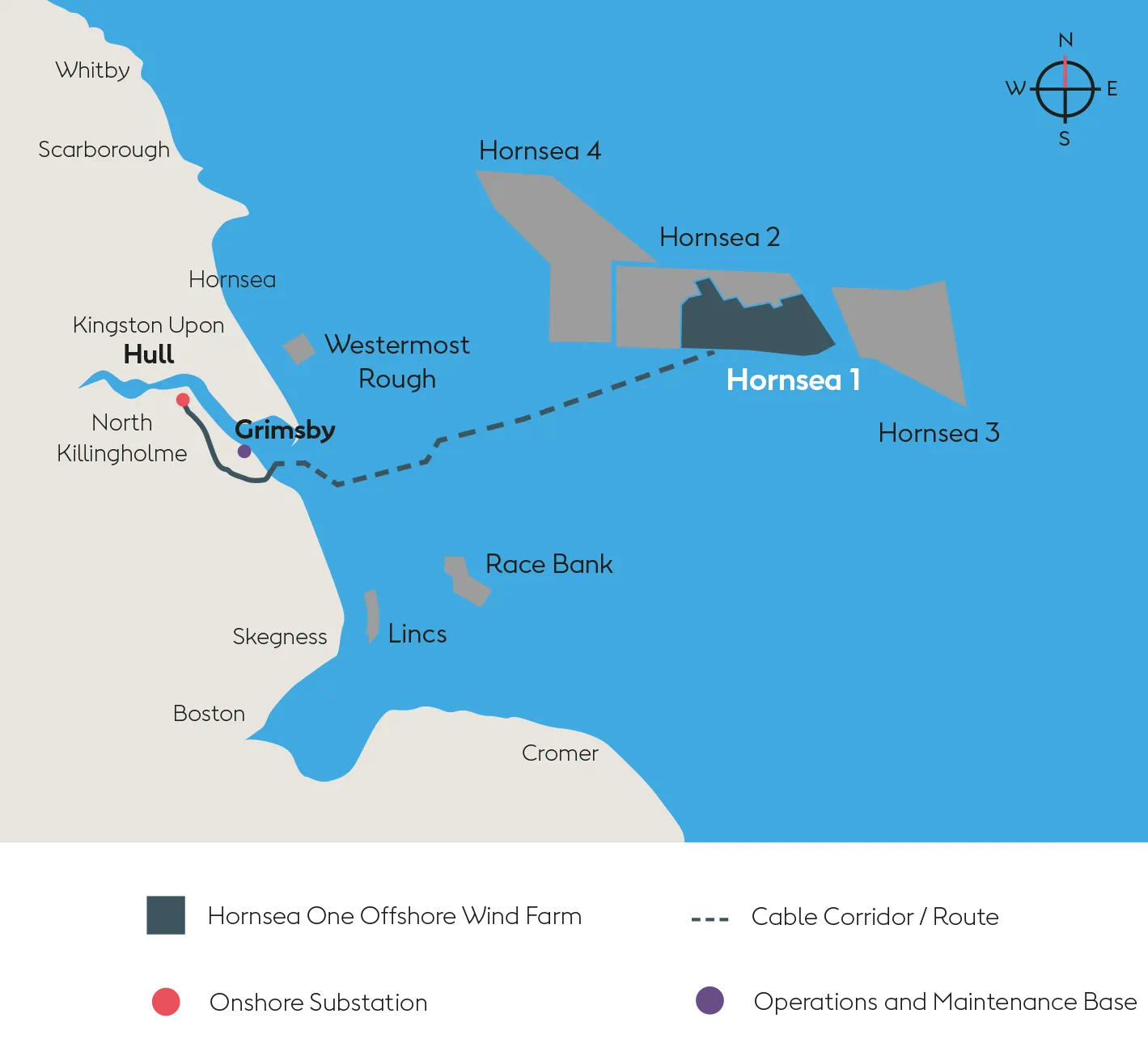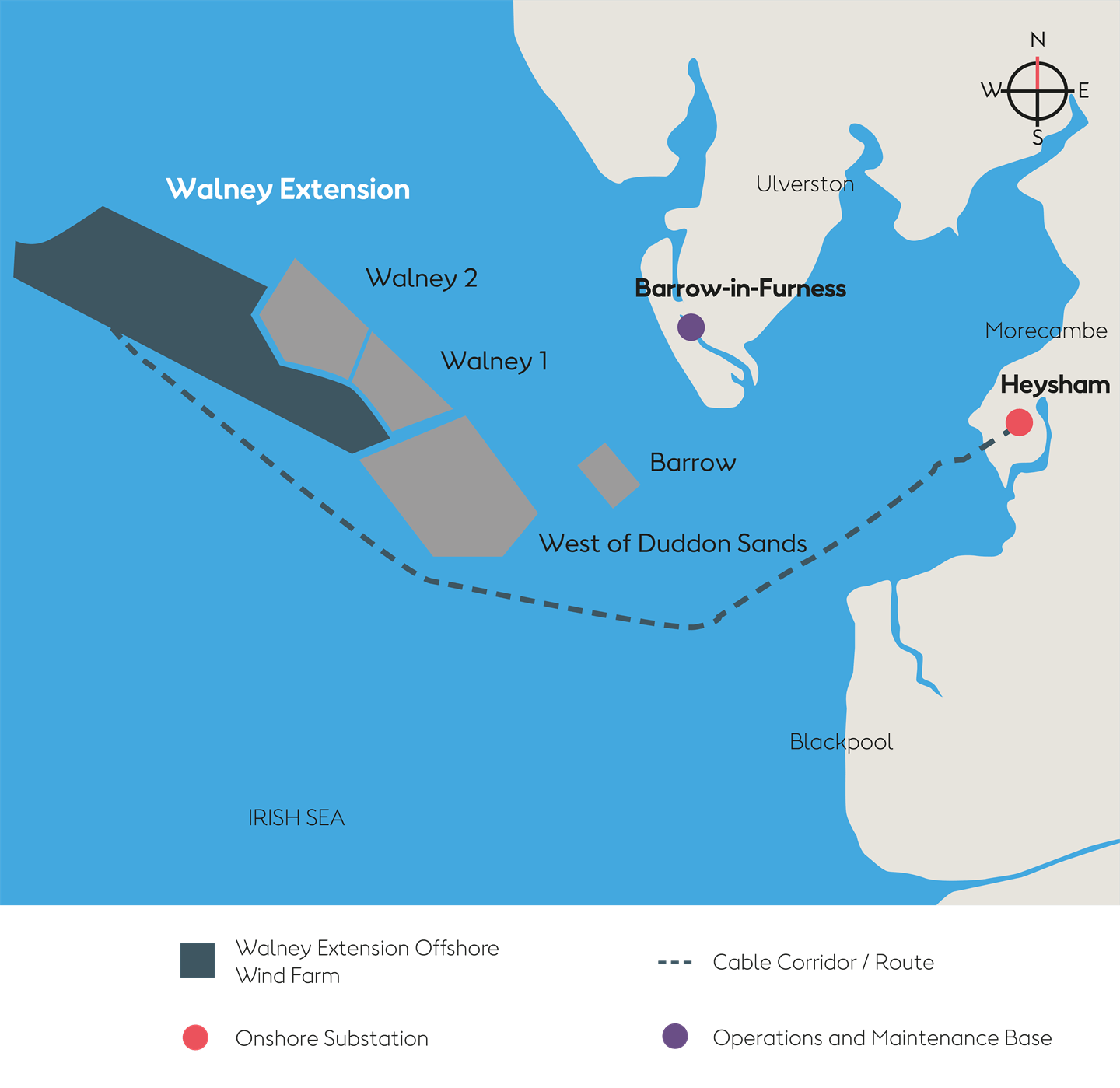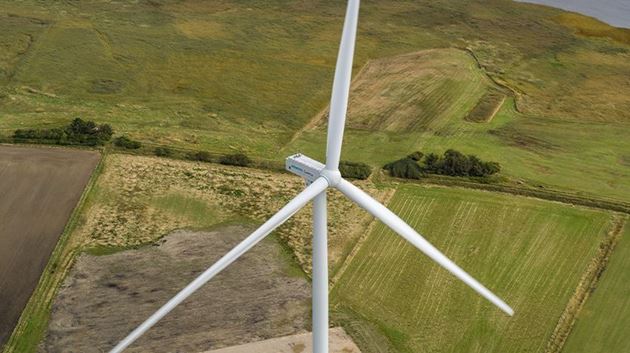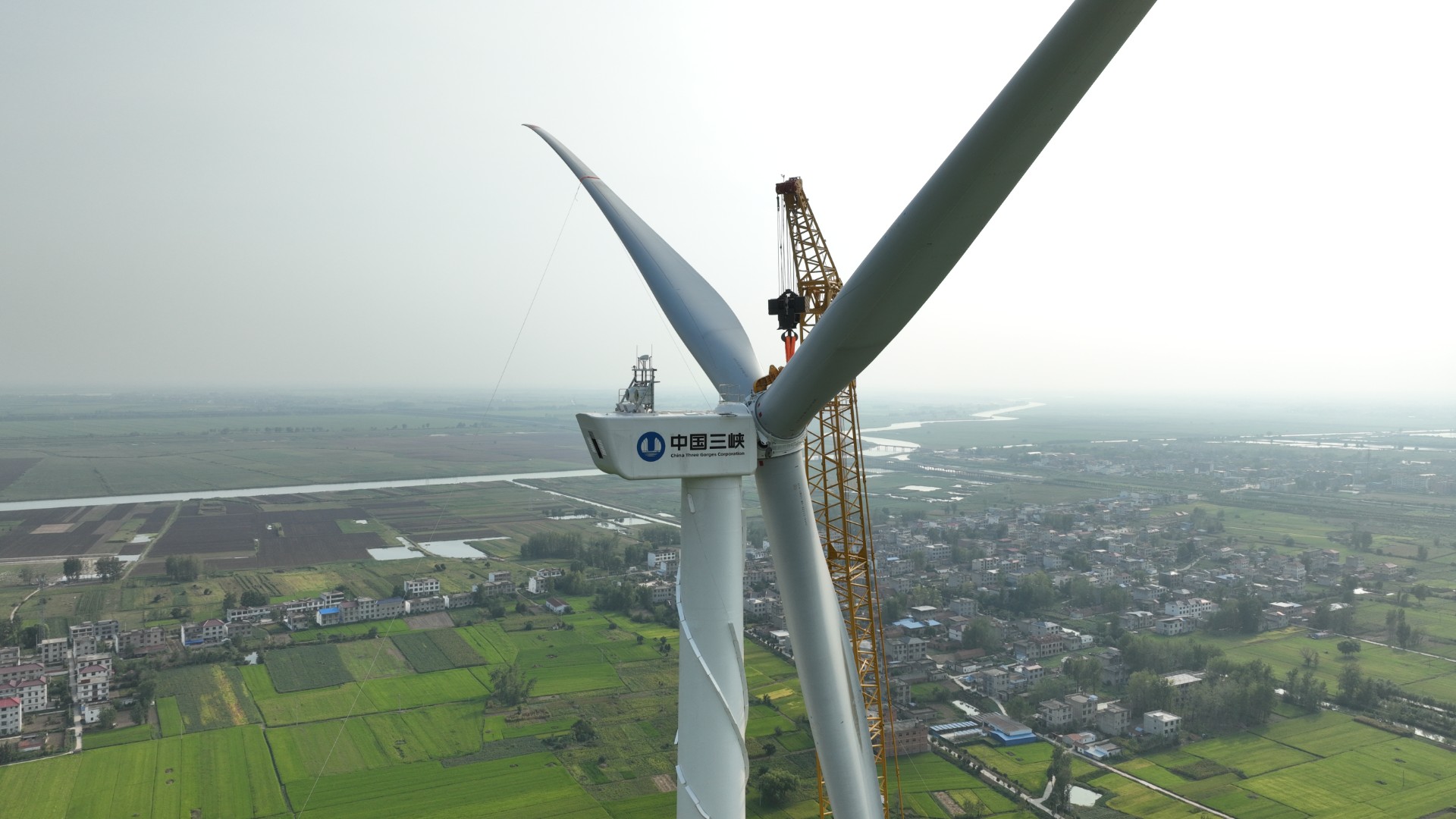Wind Energy/Harnessing The Power Of The Wind
Imagine a world where the air we breathe is not only vital for life, but also a boundless source of sustainable energy. Wind energy, also known as harnessing the power of the wind, has emerged as a game-changer in the realm of renewable energy. By simply capturing the force of the wind and converting it into electricity, we have unlocked a limitless energy potential that is both clean and abundant. In this article, we will explore the incredible advancements in wind energy technology and how it is revolutionizing our approach to power generation. Get ready to be blown away by the awe-inspiring possibilities of harnessing the power of the wind!
Harnessing Wind Energy
Welcome to a comprehensive guide on harnessing wind energy! In this article, we will explore the basics of wind energy, how wind turbines work, the advantages and disadvantages of wind energy, the history of this renewable source, the global wind energy status, its environmental impact, offshore wind energy, technological advancements, energy storage and integration, job creation, community and economic benefits, and the future of wind energy.
The Basics of Wind Energy
Wind energy is the process of harnessing the power of the wind to generate electricity or mechanical power. It is a renewable source of energy that has been used for centuries. When the wind blows, it creates kinetic energy that can be converted into usable power.
How Wind Turbines Work
Wind turbines are the key players in converting wind energy into electricity. These tall structures, equipped with rotor blades, capture the kinetic energy of the wind. As the wind blows, the rotors spin, which in turn activates a generator within the turbine. This generator produces electricity, which can be used to power homes, businesses, and even entire communities.
Advantages of Wind Energy
One of the primary advantages of wind energy is that it is a renewable and clean source of power. Unlike fossil fuels, wind does not produce harmful greenhouse gas emissions or contribute to climate change. Additionally, wind energy is abundant and widely available, making it a sustainable solution for meeting our energy demands.
Disadvantages of Wind Energy
While wind energy has numerous benefits, it also has some disadvantages. One of the main concerns is the intermittent nature of wind; the generation of electricity relies heavily on wind availability. Moreover, wind turbines can be visually intrusive and cause noise pollution for nearby residents. The manufacturing and installation of wind turbines also have certain environmental impacts.
History of Wind Energy
Wind energy has a rich history spanning centuries. Early civilizations utilized wind energy for various purposes, such as grinding grain and pumping water. However, it was the invention of windmills in the Middle Ages that revolutionized its application and made it a vital part of agriculture and industry. Today, modern wind turbines have built upon these historical foundations to amplify wind energy’s potential.
Early Utilization of Wind Energy
Long before the advent of wind turbines, ancient civilizations harnessed the power of wind through simpler means. Sailboats, for example, relied on wind to navigate across vast bodies of water, enabling trade and exploration. Similarly, windmills were employed to grind grains and pump water, significantly improving productivity and quality of life.
Invention of Windmills
In the Middle Ages, windmills emerged as true game-changers in harnessing wind energy. These structures, comprised of large rotating blades and mills, were capable of grinding grain, sawing wood, and pumping water. Windmills spread across the globe and played a crucial role in economic development and societal progress during that time.
Modern Wind Turbines
The modern wind turbine, as we know it today, became a reality in the late 19th century with the development of electricity and advanced machinery. A critical milestone in wind energy history was the construction of the first electricity-generating wind turbine in Scotland in 1887. Since then, wind turbines have evolved significantly in design, efficiency, and capacity, becoming an integral part of the clean energy revolution globally.
Global Wind Energy Status
Wind energy has witnessed remarkable growth worldwide in recent years. Currently, the global wind energy capacity stands at [insert current capacity in megawatts]. This impressive figure reflects the increasing adoption and recognition of wind energy as a critical component of the energy mix.
Leading Countries in Wind Energy
Several countries have emerged as leaders in wind energy generation. The top countries in terms of wind energy capacity include [list leading countries]. These nations have invested heavily in wind power infrastructure, capitalizing on their favorable wind resources and embracing the shift towards clean, sustainable energy sources.
Growth and Projections
The future of wind energy looks promising, with significant growth and expansion projected in the coming years. Global projections suggest that wind energy capacity will reach [insert projected capacity in megawatts] by [insert projected year]. This substantial growth indicates the increasing reliance on wind energy to meet the world’s energy demands while reducing greenhouse gas emissions.
Environmental Impact of Wind Energy
Wind energy offers several environmental benefits, making it an attractive alternative to traditional fossil fuel sources. By harnessing the power of the wind, wind turbines contribute to the reduction of carbon footprints and mitigate climate change. However, it is essential to consider certain environmental impacts associated with wind energy deployment.
Reducing Carbon Footprint
Wind energy plays a significant role in reducing carbon emissions and combatting climate change. By replacing fossil fuel-based electricity generation with wind power, we can minimize greenhouse gas emissions and decrease our reliance on finite resources. Wind energy is a clean and sustainable solution that brings us closer to a greener future.
Impact on Wildlife
While wind energy is a clean source of power, it can pose challenges for wildlife, particularly birds and bats. Collisions with wind turbine blades and disruption of migration patterns are some concerns associated with wind energy. However, advancements in turbine design, site selection, and monitoring technologies are mitigating these risks and ensuring better coexistence between wind energy and wildlife.
Noise Pollution
Wind turbines do produce noise, which can be a concern for those living in close proximity. However, rigorous noise regulations and advancements in turbine technology have significantly reduced noise levels over the years. Proper planning and effective communication with local communities are crucial in minimizing the impact of wind turbine noise.
Visual Impact
The visual impact of wind turbines is subjective and can be a matter of debate. Some people may find them visually intrusive, while others appreciate their architectural features and the positive visual statement they make about clean energy. Proper siting, careful integration into the landscape, and community engagement are crucial in addressing concerns related to the visual impact of wind energy projects.
Offshore Wind Energy
Harnessing wind energy is not limited to land-based wind farms. Offshore wind energy has gained traction globally, offering unique advantages and challenges compared to onshore wind energy.
Advantages of Offshore Wind Farms
Offshore wind farms benefit from stronger and more consistent winds, resulting in higher energy production. Additionally, locating turbines offshore reduces visual impact and potential noise concerns for nearby communities. Offshore wind energy also opens up new areas for development, increasing the overall capacity for wind power generation.
Challenges of Offshore Wind Energy
Despite its advantages, offshore wind energy faces several challenges. Installation and maintenance of turbines in offshore environments can be complex and expensive. Adverse weather conditions, transmission of the electricity generated, and potential impacts on marine ecosystems are some challenges that need to be addressed for successful offshore wind energy deployment.
Wind Energy Technology Advancements
Constant innovation and technological advancements have been instrumental in unlocking the full potential of wind energy. Here are a few notable advancements in wind energy technology.
Carbon Fiber Blades
One significant improvement in wind turbine design is the use of carbon fiber blades. These blades are lighter, stronger, and more flexible than traditional fiberglass blades. The use of carbon fiber allows turbines to capture more wind energy and operate more efficiently.
Floating Wind Turbines
Floating wind turbines are a groundbreaking development that brings wind energy to deeper waters. These turbines, anchored to the seabed, eliminate the depth restrictions associated with traditional fixed-bottom offshore wind turbines. Floating turbines enable the harnessing of wind energy in areas that were previously inaccessible, further expanding offshore wind energy potential.
Turbine Size and Capacity
Wind turbines have grown significantly in size and capacity over the years. Modern turbines can reach heights exceeding [insert height in meters] and have capacities of [insert capacity in megawatts]. Larger turbines capture more wind energy and are more efficient, contributing to increased electricity generation and quicker returns on investment.
Energy Storage and Integration
Wind energy’s intermittent nature has led to advancements in energy storage and integration technologies. These innovations help ensure a reliable and continuous supply of electricity generated by wind turbines.
Battery Storage Systems
Battery storage systems are crucial in storing excess wind energy for later use. By integrating batteries with wind energy systems, we can overcome the challenges posed by wind intermittency and achieve a more stable and consistent power supply. Battery storage systems also enable electricity generation during periods of low wind speeds, ensuring a constant energy flow.
Hydrogen Production
Another innovative application of wind energy is the production of hydrogen through electrolysis. Excess electricity generated by wind turbines can be used to split water into hydrogen and oxygen. The hydrogen produced can then be stored and used as a clean and versatile energy source for various applications, including transportation and industrial processes.
Grid Integration
Integrating wind energy into the existing power grid is crucial for an efficient and reliable energy system. Grid integration technologies ensure that electricity generated by wind turbines is seamlessly incorporated into the grid, optimizing energy flow and minimizing transmission losses. This integration allows wind energy to contribute to the overall stability and balance of the grid.
Wind Energy and Job Creation
The wind energy sector offers numerous job opportunities and has the potential to create a significant number of jobs.
Wind Turbine Technician:
Wind turbine technicians, often referred to as wind techs, are responsible for the maintenance, repair, and operation of wind turbines. They perform routine inspections, troubleshoot issues, and ensure the turbines operate efficiently.
Wind Energy Project Manager:
Project managers oversee the planning, development, and execution of wind energy projects. They coordinate with various teams, manage budgets, and ensure projects are completed on time and within scope.
Wind Energy Engineer:
Wind energy engineers design and optimize wind turbine systems. They work on improving turbine efficiency, analyzing wind data, and developing innovative solutions for the wind energy industry.
Site Manager (Wind Farm):
Site managers are responsible for the day-to-day operations of wind farms. They oversee personnel, manage maintenance schedules, and ensure the wind turbines produce electricity consistently.
Wind Energy Analyst:
Wind energy analysts study wind patterns and data to assess the feasibility of wind energy projects. They help with site selection, energy production estimations, and financial modeling.
Environmental Specialist (Wind Energy):
Environmental specialists focus on ensuring wind energy projects comply with environmental regulations. They assess the impact of wind farms on local ecosystems and help develop mitigation strategies.
Electrical Technician (Wind Energy):
Electrical technicians specializing in wind energy work on the electrical systems of wind turbines. They install, maintain, and repair electrical components to ensure smooth turbine operation.
Wind Energy Sales Representative:
Sales representatives in the wind energy sector promote wind turbine equipment and services to potential clients. They build relationships with customers and negotiate contracts.
Wind Resource Analyst:
Wind resource analysts analyze wind data to determine the potential energy production at a specific site. They play a crucial role in site assessment and project planning.
Health and Safety Coordinator (Wind Energy):
Health and safety coordinators ensure that wind energy projects adhere to safety standards and regulations. They develop safety protocols, conduct training, and investigate incidents.
Wind Energy Researcher:
Researchers in the wind energy field work on advancing technology and improving efficiency. They may be involved in academic research or work for private companies and research institutions.
Wind Energy Quality Control Inspector:
Quality control inspectors examine wind turbine components to ensure they meet quality standards. They perform inspections during manufacturing and installation processes.
Blade Repair Technician:
Blade repair technicians specialize in repairing and maintaining wind turbine blades. They address issues such as erosion, cracks, and damage to ensure optimal performance.
Wind Farm Developer:
Wind farm developers identify suitable locations for wind energy projects, secure permits, and manage the overall development process from inception to completion.
Energy Storage Specialist (Wind Energy):
Some wind energy projects incorporate energy storage solutions. Energy storage specialists work on implementing and maintaining these systems, such as battery storage.
Job Opportunities in Wind Energy Sector
The wind energy sector provides employment opportunities across various fields, including engineering, construction, manufacturing, maintenance, and research. From designing and manufacturing turbines to installing and maintaining wind farms, there is a diverse range of careers available in the wind energy industry.
Job Creation Potential
The rapid growth of wind energy has resulted in substantial job creation worldwide. Each new wind farm project brings opportunities for local employment and boosts the economy through direct and indirect job creation. The wind energy sector has become a significant driver of job growth and economic development, particularly in regions with abundant wind resources.
Community and Economic Benefits
Wind energy brings several community and economic benefits, contributing to local development and sustainability.
Local Economic Development
The development of wind energy projects stimulates local economies by creating jobs, attracting investments, and increasing tax revenues. Local businesses also benefit through the provision of goods and services required for wind farm construction and operation. These economic benefits help revitalize communities and promote regional and rural development.
Community Investment
Wind energy projects often involve community engagement and investment. Developers work closely with local communities to address concerns, provide information, and involve them in the decision-making process. Collaborative initiatives, such as community-owned wind farms, allow residents to directly benefit from wind energy projects, ensuring a sense of ownership and promoting local support.
Famous Wind Energy Projects
Hornsea Project One
- Location: North Sea off the coast of England
- Capacity: 1,224 MW
- Number of turbines: 174
- Completion date: 2021
- Owner: Ørsted
The Hornsea Project One is the world’s largest offshore wind farm. It consists of 174 wind turbines that generate enough electricity to power over 1.6 million homes. The project is a major milestone in the development of offshore wind energy and is expected to play a significant role in the UK’s transition to a low-carbon economy.
Walney Extension
- Location: Irish Sea off the coast of England
- Capacity: 659 MW
- Number of turbines: 87
- Completion date: 2021
- Owner: Orsted
The Walney Extension is the second-largest offshore wind farm in the world. It consists of 87 wind turbines that generate enough electricity to power over 700,000 homes. The project is a major step forward in the development of offshore wind energy in the UK and is expected to attract further investment in the sector.
Hywind Scotland
- Location: North Sea off the coast of Scotland
- Capacity: 30 MW
- Number of turbines: 10
- Completion date: 2017
- Owner: Equinor
The Hywind Scotland is the world’s first floating offshore wind farm. It consists of 10 wind turbines that are anchored to the seafloor using mooring systems. This innovative approach allows the wind farm to be located in deeper waters, where wind speeds are stronger. The Hywind Scotland is a major success story for the floating offshore wind industry and is expected to pave the way for future floating wind farms.
Gansu Wind Farm
- Location: Gansu Province, China
- Capacity: 20,150 MW
- Number of turbines: Over 7,000
- Completion date: 2021
- Owner: State Grid Corporation of China
The Gansu Wind Farm is the world’s largest onshore wind farm. It consists of over 7000 wind turbines that generate enough electricity to power over 12 million homes. The project has been a major success story for the Chinese wind energy industry and is expected to help China meet its ambitious renewable energy targets.
Moerdijk Offshore Wind Farm
- Location: North Sea off the coast of the Netherlands
- Capacity: 307 MW
- Number of turbines: 48
- Completion date: 2019
- Owner: Eneco
The Moerdijk Offshore Wind Farm is one of the largest offshore wind farms in the Netherlands. It consists of 48 wind turbines that generate enough electricity to power over 300,000 homes. The project is helping to make the Netherlands a global leader in offshore wind energy.
Vestas
- Founded: 1945
- Headquarters: Denmark
- Market share: Over 30%
- Key products: Wind turbines
Vestas is the world’s leading wind turbine manufacturer. The company has a long history of innovation and has developed some of the most efficient and reliable wind turbines on the market. Vestas is committed to sustainability and is working to reduce the environmental impact of its operations.
Siemens Gamesa Renewable Energy
- Founded: 2017
- Headquarters: Spain
- Market share: Over 15%
- Key products: Wind turbines, offshore wind turbines
Siemens Gamesa Renewable Energy is a joint venture between Siemens and Gamesa, two of the world’s largest renewable energy companies. The company has a strong track record of innovation and is developing some of the most advanced wind turbines on the market. Siemens Gamesa is also a major player in the offshore wind energy market.
GE Renewable Energy
- Founded: 2015
- Headquarters: United States
- Market share: Over 10%
- Key products: Wind turbines, offshore wind turbines, hybrid renewable energy systems
GE Renewable Energy is a subsidiary of General Electric. The company has a long history of innovation and is one of the world’s leading providers of renewable energy solutions. GE Renewable Energy is developing some of the most innovative and efficient wind turbines on the market and is also a leader in the hybrid renewable energy market.
GE Renewable Energy is a global leader in renewable energy solutions, with a strong presence in wind energy, solar energy, hydropower, and other renewable technologies. The company’s extensive research and development capabilities enable it to develop innovative and efficient wind turbines, and it is also a leader in the offshore wind energy market. GE Renewable Energy is committed to sustainability and is working to reduce the environmental impact of its operations.
Nordex
- Founded: 1975
- Headquarters: Germany
- Market share: Over 4%
- Key products: Wind turbines
Nordex is a leading wind turbine manufacturer with a strong presence in Europe and Asia. The company has developed a range of wind turbines to suit various applications, including onshore and offshore wind farms. Nordex is committed to innovation and is continuously working to improve the performance and efficiency of its turbines.
Goldwind
- Founded: 1988
- Headquarters: China
- Market share: Over 4%
- Key products: Wind turbines
Goldwind is a Chinese wind turbine manufacturer that has emerged as a global leader in the industry. The company has developed a range of wind turbines that are known for their high efficiency and reliability. Goldwind is actively expanding its global footprint and is seeking to capture a larger share of the growing wind energy market.
The Future of Wind Energy
The future of wind energy is bright, with ongoing innovation and breakthroughs shaping its potential.
Innovations and Breakthroughs
Technological advancements continue to push the boundaries of wind energy. Innovations in turbine design, materials, and control systems are increasing efficiency and reducing costs. Emerging concepts, such as kite turbines and airborne wind energy systems, offer exciting possibilities for further expanding wind energy’s reach and impact.
Integration with Other Renewables
Wind energy plays a significant role in the overall transition to a more sustainable energy mix. The integration of wind energy with other renewable sources, such as solar power and hydropower, allows for a diverse and complementary energy system. By combining different renewable sources, we can create a resilient and environmentally friendly energy network that meets our needs for generations to come.
In conclusion, wind energy has come a long way in its journey towards becoming a prominent player in our global energy landscape. With its renewable nature, numerous advantages, and continuous advancements, wind energy offers a powerful solution to combat climate change, reduce our carbon footprint, create jobs, and foster sustainable development. As we move towards a greener future, harnessing the power of the wind will undoubtedly play a central role in meeting our energy needs while preserving our planet for future generations.








